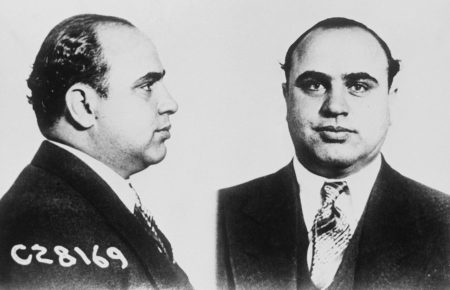It took 14 years, but Wealthfront has finally become profitable—thanks to Fed Chairman Jerome Powell. Here’s how it intends to stay in the black.
By Jeff Kauflin, Forbes Staff
The devastating announcement came on September 2, 2022: Swiss banking giant UBS was scrapping its eight-month-old agreement to acquire Palo Alto robo-advisor Wealthfront for a rich $1.4 billion. UBS’ chairman opined a few months later that the fintech’s “mass affluent” clients simply weren’t upscale enough to be a good fit, but the deal had also faced substantial resistance from U.S. regulators. Its collapse, whatever the cause, was a blow for the then 14-year-old fintech and its venture capital investors.
“We were collectively demoralized,’’ admits Mike Volpi, a longtime Wealthfront board member and partner at Index Ventures. “It was a very nice value at the time.” Backers had poured $230 million into Wealthfront, most recently at a $500 million valuation in late 2017. Now fintech valuations–elevated during Covid–were falling, and Wealthfront had less than six months’ worth of cash left in the bank. To ease the breakup pain, UBS gave Wealthfront a $70 million loan, which it could convert into equity at the same $1.4 billion valuation.
Wealthfront CEO David Fortunato prefers not to discuss that failed deal. “You have to have a very short memory of things like that,” says the bearded 38-year-old, who typically dresses in un-UBS-like baseball caps, beanies and t-shirts. Rather than lick his wounds, he doubled down on a strategy that sounds distinctly mass affluent: offering high-yield cash accounts. The timing was golden; the Federal Reserve had already raised the federal funds rate from 0% in March 2022 to 2.5% and would go on to boost it to 5.50% over the next 10 months, prompting consumers to move funds from traditional bank accounts into high-yielding accounts and money market funds.
During 2023, Wealthfront’s cash accounts ballooned from $9 billion to $27 billion, while total assets went from $32 billion to $55 billion. (The cash accounts now pay 5% interest and are insured by the Federal Deposit Insurance Corporation for up to $8 million through deals with partner banks.) Wealthfront’s revenue for the year more than doubled to nearly $200 million, and it recorded its first full year of profitability, booking $89 million in earnings before interest, taxes, depreciation and amortization and landing on Forbes’ Fintech 50 list for 2024.
The good times continued in the first quarter of this year, with revenue up 79% from the first quarter of 2023, and net income positive for the sixth straight quarter, reports Fortunato. Assets hit $64 billion, with $33 billion of that in cash accounts. Board member Volpi predicts Wealthfront’s revenue will double again this year, though Fortunato declines to share the company’s official projections.
Now this profitable, adolescent fintech faces a new set of grown-up challenges. When the Federal Reserve eventually reduces interest rates, Wealthfront will have to find other ways to keep growing. And it’s still likely too small to go public–recent research from venture capital firm Meritech shows that investment returns are typically negative for companies that cross the threshold with less than $700 million in annualized revenue. That means its VC backers will have to wait even longer for their payout.
Wealthfront has a history of reinventing itself. Andy Rachleff, a cofounder of venture capital firm Benchmark, started it back in 2008 with former trader Daniel Carroll under the less dignified name of KaChing.
Their initial idea was a marketplace where investors paid for access to professional money managers of their choosing. KaChing pocketed some of the fees and gave the rest to the portfolio managers. It was launched with personal investments from Silicon Valley bigwigs, including Marc Andreessen and Ben Horowitz. In 2010 CEO Rachleff renamed it Wealthfront, but the concept flopped, and the next year, he pivoted to a completely new model: offering managed investment portfolios, algorithmically designed to fit investors’ time horizons and risk tolerance, at a rock-bottom fee. It was a business—now known as robo-advising—that New York-based startup Betterment had pioneered just a year and a half before.
Fortunato lived through and was a big part of Wealthfront’s transition—he was the third employee, hired in November 2009, just a year and a half after earning his degree at Amherst with a double major in computer science and economics. KaChing’s initial space, he recalls, was formerly occupied by a dry cleaner. “They had to do air quality tests to make sure any of the chemicals used for dry cleaning were not leaching into the air from the foundation,” he says. It was such a low-budget operation that Fortunato ended up personally assembling 40 Ikea desks (purchased at $130 each) for new hires.
From the first, Rachleff believed the key to this robo-advisor business was to use software to automate everything so he could eke out profits off low fees. “If you’re going to deliver something that’s really uneconomic for the incumbents to address, you have to create a completely different cost structure,” says Rachleff, 65, now the chairman. “If we couldn’t automate it, we wouldn’t deliver it.” Wealthfront started out charging (and still charges) just 0.25% of assets, undercutting both typical financial advisors, whose fees then averaged 1.3%, and even Betterment, which subsequently lowered its prices and now also charges 0.25% of assets for regular stock and bond portfolios. Neither fintech charges a percentage fee for cash accounts—instead, they earn their keep by taking a spread, paying customers a slightly lower interest rate than what they receive from their bank partners.
Betterment has also gone into the hybrid-advisor business, offering help from a certified financial planner and a computerized asset allocation for 0.65% of assets, with a $100,000 minimum. But Rachleff and Fortunato, who was named CTO in 2011, president in 2019 and CEO in 2021, have never veered from the low-cost, automation-only model. Today, half of Wealthfront’s 280 employees are engineers, and it has just 19 customer service reps covering more than 800,000 users. Betterment has in excess of 400 employees for its more than 850,000 customers.
At the start, Wealthfront targeted rank-and-file tech company workers who, thanks to their stock options, tended to have higher net worths than their Millennial counterparts flocking to Betterment. It even set up special programs for employees at Facebook and Twitter to help them sell off their post-IPO shares and diversify their portfolios. Even to this day, Wealthfront has a more affluent user base than most fintechs–its average customer earns $120,000 a year, it says.
In 2013, it became the first robo-advisor to offer automated tax-loss harvesting along with direct indexing for accounts over $500,000, which it quickly cut to $100,000. Tax-loss harvesting is the practice of selling securities to recognize a loss that can offset taxable gains realized from other holdings. With direct indexing, instead of owning exchange-traded funds (ETFs) that track a broad market index like the S&P 500, an investor owns individual stocks that mimic that index, which creates more loss harvesting opportunities. While direct indexing wasn’t new—Parametric, now part of Morgan Stanley, began offering it in the 1990s—Wealthfront was the first to make it an option for portfolios so small.
Wealthfront got a lot of mileage from its tax-loss harvesting and direct-indexing services, but it also took some heat for how they were initially promoted and implemented. In 2018, it agreed to an SEC censure and paid a $250,000 fine for, among other things, claiming it would avoid any wash-sale transactions in client accounts, while failing to consistently do so from 2012 to 2016. (Under the wash-sale rules, if you sell a security at a loss and buy the same or a similar security within 30 days before or after the sale, you can’t claim the loss.)
As CTO, Fortunato helped build Wealthfront’s loss-harvesting and direct-indexing software and in 2015, led a team of 15 engineers on a two-year project to build Wealthfront’s own brokerage infrastructure. Bringing the tech in house lowered costs and made it easier and faster for Wealthfront to launch new products. By 2016, the startup was broadening its pitch beyond tech workers but also facing new competition from big incumbents, with Schwab, Vanguard and Fidelity launching their own robo-advice services.
Robo-advice has turned out to be both a smaller business than once predicted and a tough one for all but the lowest-cost providers. “It has failed to take off the way people thought it would,” says Amy Arnott, a portfolio research strategist at Morningstar. U.S. robo-advisors hold $1.07 trillion in customer assets, according to wealth management firm Condor Capital, or 3.6% of the $30 trillion in professionally managed assets held by retail investors in America. JPMorgan recently shut down its robo-advisor business, citing challenges with making the business profitable. And Betterment announced in April that it will acquire Goldman Sachs’ Marcus robo-investing accounts.
The big winner in terms of assets hasn’t been a fintech innovator, but Vanguard–its hybrid-robo Personal Advisor service, launched in 2015, charges 0.30% of assets and less for larger accounts, while its newer pure-robo service costs just 0.20% of assets a year, including underlying fund fees. Between them, they’ve attracted more than $300 billion (much of it from existing customers), reports Condor, making the slow-moving mutual fund behemoth the largest robo-advisor out there. Vanguard is also, by Morningstar’s ratings, the best, with Wealthfront, Betterment, Fidelity and Schwab scoring just a notch below.
Betterment CEO Sarah Levy says companies are retreating from the robo-advisor battle because customer acquisition costs are high. “This business has great long-term customer value, but so many people are fighting for market share that payback has taken longer than people were willing to wait,” she says. Asked whether Betterment has had any profitable quarters, she won’t comment, saying cryptically, “Perhaps. Perhaps not … How about this? We are not looking to raise capital.”
She joined Betterment in late 2020 and replaced founder Jon Stein. Since then, she has led Betterment to lean into two newer business lines: 401(k) retirement accounts for small companies and investing products for financial advisors who manage $150 million or less. Her long-term strategy for profitability is to create products that can be sold to multiple audiences–including retail customers, small companies and investment advisors–in the same way that incumbents like Schwab, Fidelity and Vanguard have done.
In contrast to Betterment, Wealthfront has steered clear of human advisors and tried to differentiate itself by releasing automated new products, with mixed results. For example, in 2016, it launched a 529 college savings plan. It was a heavy lift, but so far has attracted just $600 million. Vanguard managed approximately $165 billion in 529 assets at the end of 2023. While Wealthfront’s automated portfolios of ETFs rely heavily on low-cost Vanguard funds, in 2018 it rolled out an internally managed “Risk Parity’’ fund designed to mimic a complex investing strategy used by hedge funds like Bridgewater and AQR. Wealthfront automatically placed some of investors’ funds into the untested vehicle unless they opted out, but that fund performed poorly in its first year and the years thereafter.
The years leading up to the UBS deal weren’t uniformly good ones for Wealthfront. In February 2019, it finally landed on what seemed to be a winning new product when it unveiled its cash accounts. A few months later, it was dangling an interest rate of 2.57%, topping every high-yield savings account then offered by American banks, according to Bankrate. This time, Wealthfront beat other fintechs to the punch. Robinhood had planned to launch a high-yield cash account sooner but stumbled into a regulatory debacle almost immediately after announcing the feature, causing the company to retrench and delay the launch until October 2019. Betterment got out of the gate in July of 2019.
Then came the Covid pandemic—-a boon for some fintechs, but a rocky time for Wealthfront. Its total assets shrunk slightly in 2020 as it missed out on the meme-stock frenzy, and the Federal Reserve, seeking to goose the pandemic-shocked economy, pushed the federal funds rate down to zero, prompting customers to move money out of cash accounts. Asset growth in 2021 and 2022 was 28% and 10%, respectively—reflecting, in part, the stock market’s 2021 surge and 2022 decline. But climbing interest rates and Silicon Valley Bank’s collapse in March 2023 spurred even more consumers to move their cash to high-yielding accounts like Wealthfront’s.
It’s not that complicated. Wealthfront has finally become profitable because it has kept expenses in check while revenue has taken off. Last year, it spent just $6 million on marketing, relying largely on its high cash account interest rates, referrals from existing customers and financial comparison sites to draw in new users. When interest rates eventually fall, this will become less effective as a marketing tool, though Volpi says the accounts will still be profitable for Wealthfront at interest rates as low as 2.5%. The hope is that, as interest rates come down, customers who do pull money out of cash accounts will move it into Wealthfront’s investing accounts. “When rates are high, we tend to lead with cash. When rates are low, we tend to lead with investment,” Fortunato says.
Meanwhile, Wealthfront continues to experiment with new products and enhanced features. In May, it rolled out an automated bond ladder service, which makes it easy for investors to lock in today’s high interest rates for six months to six years by owning individual Treasuries, whose interest isn’t subject to state or local income tax. (That can be a big deal to customers who live in high income tax locales like California, Hawaii, New York and New Jersey.) Last year, Wealthfront introduced an automated bond portfolio, which creates a mix of bond ETFs with a one-to-three-year time horizon, tailored to an investor’s estimated state tax rate. It’s already attracted hundreds of millions in investment.
It keeps adding convenient features to its cash account, too. In March, it started offering same-day transfers to 400 banks, including Chase and Bank of America, through the big banks’ Real Time Payments Network. Cash account holders get a debit card, fee-free access to 19,000 ATMs at places like Target and CVS and unlimited free transfers to bank accounts. But you don’t get physical checks or online bill payment through Wealthfront’s platform–meaning you must set up payments as debits with the recipient or transfer money to a normal bank account to pay your bills.
Last year, Wealthfront expanded its appeal to more active investors with a single-stock investing feature that allows zero-commission purchases—and even fractional purchases of individual companies, or themed portfolios of companies. Unlike Vanguard, Wealthfront does offer exposure to crypto through BlackRock’s iShares Bitcoin Trust (IBIT) and Grayscale’s Ethereum Trust (ETHE). It doesn’t offer crypto trading like Robinhood or its own crypto managed portfolio, as Betterment does.
What’s next? Wealthfront “could become a lender,” Volpi says. Fortunato declines to elaborate, except to say, “We’ll likely have a different take on it than the kind of classic personal loan products that fintechs have come out with.”
Meanwhile, with UBS in the rearview mirror, Volpi acknowledges Index will have to wait longer to realize a return on its 10-year-old Wealthfront investment. “If it takes a couple more years of growing into the right kinds of numbers, we’ll definitely hang in there,” he says. “The hope is there’s an IPO.”
MORE FROM FORBES
Read the full article here
















